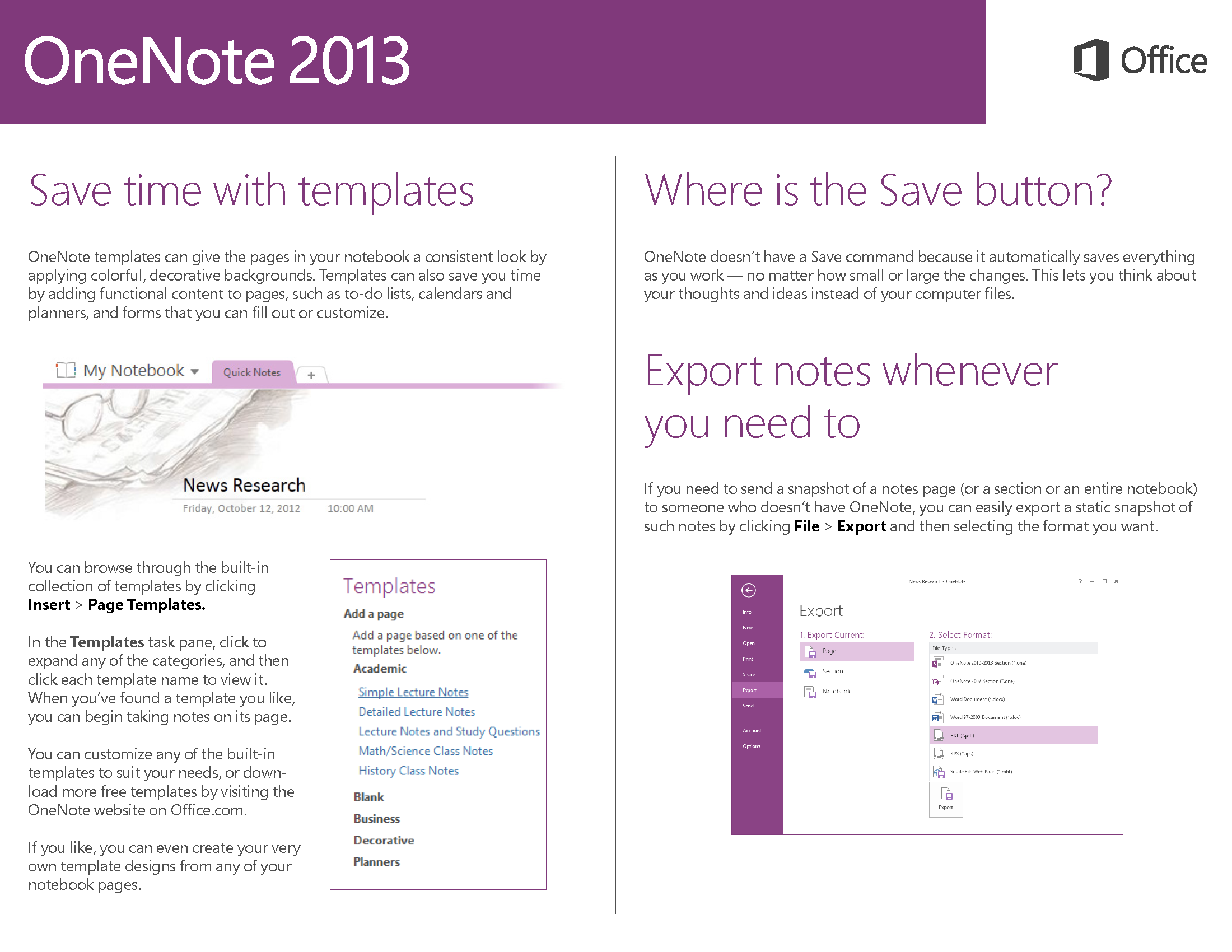

Rather than trying to modify this existing notebook, you’ll want to create your own. OneNote includes sample notebooks to highlight OneNote features. Subpage: The subpage is the lowest level in the notebook's structure and helps break up information normally placed on a single page.The Page Tabs pane lists pages in a selected section. Page: You place your notes and other items on the notebook pages.This is particularly useful when a notebook contains many sections. Section Group: A group enables you to place associated sections together.

Each section provides separation in the notebook and serves as the main topical level in the notebook's hierarchy. Section: This is a tabbed divider that enables you to group pages related to a particular topic or project phase.For further organization, you can even create subpages with additional information under the same title as its corresponding page. Pages are where you write, doodle, and paste in your notes.
#Onenote 2013 pdf search series
OneNote uses the same idea but with virtual folders called notebooks with a series of color-coded tabs or sections, each section made up of one or more pages.
Notebook: The physical notebooks in your work area probably include color-coded tabs to divide the notebook into separate sections or topics, each with its own collection of pages. The different types of OneNote "information containers" are: In OneNote, you use different containers to define the organizational levels, with the top-level container being the notebook. Even if you have never heard of OneNote or used it before, it's likely hanging out on your computer just waiting for you to discover this “secret” Microsoft Office tool. A note can be almost anything you want it to be-a typed line of text, a sketch, an audio or video clip, a picture, a link to a web page or file-you get the idea. OneNote is a place to create, gather, store, and search notes. How can you search for this collection of notes and content? Try OneNote. How do you handle the stacks of data that doesn’t fit into the most popular Microsoft Office programs? What is the best way to handle notes from meetings, brainstorming sessions, classes, project planning, Post-It notes pasted to your monitor, important hand-written text, and "where do I store this?" nuggets. Much of the data you work with each day probably gets stored electronically in some way: you save appointments, meetings, and contacts in Outlook and you likely manage lists and other key data in an Excel worksheet or Word table.






 0 kommentar(er)
0 kommentar(er)
